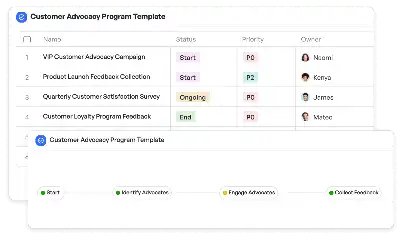Multi-sensor Time Sync Protocol
Achieve project success with the Multi-sensor Time Sync Protocol today!

What is Multi-sensor Time Sync Protocol?
The Multi-sensor Time Sync Protocol is a critical framework designed to ensure precise synchronization across multiple sensors in complex systems. In industries like autonomous vehicles, robotics, and IoT, where multiple sensors operate simultaneously, maintaining accurate time alignment is essential for data integrity and system performance. This protocol addresses challenges such as clock drift, latency, and data inconsistency, providing a robust solution for seamless sensor coordination. For example, in autonomous vehicles, sensors like LiDAR, cameras, and GPS must work in perfect harmony to ensure safety and efficiency. The Multi-sensor Time Sync Protocol ensures that all these sensors are synchronized to a common timeline, enabling accurate decision-making and real-time operations.
Try this template now
Who is this Multi-sensor Time Sync Protocol Template for?
This template is tailored for professionals and organizations working in fields that rely heavily on multi-sensor systems. Key users include engineers in autonomous vehicle development, IoT system architects, robotics researchers, and environmental monitoring specialists. For instance, a robotics engineer designing a multi-sensor robot for warehouse automation would benefit from this protocol to ensure that all sensors, such as cameras and proximity detectors, are perfectly synchronized. Similarly, IoT developers creating smart city solutions can use this template to align data from various sensors like traffic cameras, weather stations, and pollution monitors, ensuring cohesive and actionable insights.

Try this template now
Why use this Multi-sensor Time Sync Protocol?
The Multi-sensor Time Sync Protocol addresses specific pain points in multi-sensor environments, such as data misalignment, inconsistent timestamps, and system inefficiencies. For example, in autonomous vehicles, a delay in synchronizing LiDAR and camera data can lead to incorrect object detection, jeopardizing safety. This protocol eliminates such risks by providing a standardized method for time synchronization, ensuring that all sensors operate on a unified timeline. Additionally, it simplifies the integration of new sensors into existing systems, reducing development time and costs. By using this protocol, organizations can achieve higher accuracy, reliability, and scalability in their multi-sensor applications.

Try this template now
Get Started with the Multi-sensor Time Sync Protocol
Follow these simple steps to get started with Meegle templates:
1. Click 'Get this Free Template Now' to sign up for Meegle.
2. After signing up, you will be redirected to the Multi-sensor Time Sync Protocol. Click 'Use this Template' to create a version of this template in your workspace.
3. Customize the workflow and fields of the template to suit your specific needs.
4. Start using the template and experience the full potential of Meegle!
Try this template now
Free forever for teams up to 20!
The world’s #1 visualized project management tool
Powered by the next gen visual workflow engine




